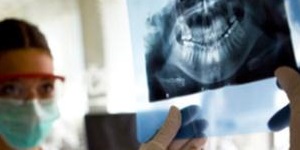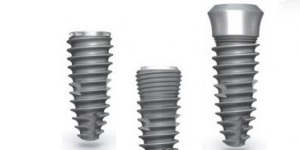
بررسی نوع و جهت نیروهای ایمپلنت
2015-12-06
آناتومی شکست ایمپلنت
2015-12-07Dental X-rays are pictures of the teeth, bones, and soft tissues around them to help find problems with the teeth, mouth, and jaw. X-ray pictures can show cavities, hidden dental structures (such as wisdom teeth), and bone loss that cannot be seen during a visual examination. Dental X-rays may also be done as follow-up after dental treatments
The following types of dental X-rays are commonly used. The X-rays use small amounts of radiation
Bitewing X-rays show the upper and lower back teeth and how the teeth touch each other in a single view. These X-rays are used to check for decay between the teeth and to show how well the upper and lower teeth line up. They also show bone loss when severe gum disease or a dental infection is present
Periapical X-rays show the entire tooth, from the exposed crown to the end of the root and the bones that support the tooth. These X-rays are used to find dental problems below the gum line or in the jaw, such as impacted teeth, abscesses, cysts, tumors, and bone changes linked to some diseases
Occlusal X-rays show the roof or floor of the mouth and are used to find extra teeth, teeth that have not yet broken through the gums, jaw fractures, a cleft in the roof of the mouth (cleft palate), cysts, abscesses, or growths. Occlusal X-rays may also be used to find a foreign object
Panoramic X-rays show a broad view of the jaws, teeth, sinuses, nasal area, and temporomandibular (jaw) joints. These X-rays do not find cavities. These X-rays do show problems such as impacted teeth, bone abnormalities, cysts, solid growths (tumors), infections, and fractures
Digital X-rays can be sent to a computer to be recorded and saved
A full-mouth series of periapical X-rays (about 14 to 21 X-ray films) is most often done during a person’s first visit to the dentist. Bitewing X-rays are used during checkups to look for tooth decay. Panoramic X-rays may be used occasionally. Dental X-rays are scheduled when you need them based on your age, risk for disease, and signs of disease
Why It Is Done
Dental X-rays are done to
Find problems in the mouth such as tooth decay, damage to the bones supporting the teeth, and dental injuries (such as broken tooth roots). Dental X-rays are often done to find these problems early, before any symptoms are present
Find teeth that are not in the right place or do not break through the gum properly. Teeth that are too crowded to break through the gums are called impacted
Find cysts, solid growths (tumors), or abscesses
Check for the location of permanent teeth growing in the jaw in children who still have their primary (or baby) teeth
Plan treatment for large or extensive cavities, root canal surgery, placement of dental implants, and difficult tooth removals
Plan treatment of teeth that are not lined up straight ,orthodontic treatment
reference
Related content
bridging the gap with dental implants






